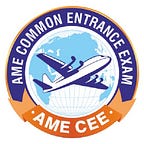What is aircraft maintenance engineering and its meaning?
Aircraft Maintenance Engineering (AME) refers to the discipline of engineering focused on ensuring the safe operation and airworthiness of aircraft. AME professionals, often known as Aircraft Maintenance Engineers, play a critical role in the aviation industry by inspecting, maintaining, and repairing aircraft to meet regulatory standards and ensure the safety of passengers and crew.
Key Aspects of Aircraft Maintenance Engineering:
1. Safety and Airworthiness: The primary objective of AME is to ensure the safety and airworthiness of aircraft. AMEs are responsible for inspecting and maintaining various components of an aircraft to prevent malfunctions and ensure that the aircraft meets regulatory standards.
2. Regulatory Compliance: AMEs work in adherence to aviation regulations and standards set by aviation authorities such as the Federal Aviation Administration (FAA) in the United States or the European Union Aviation Safety Agency (EASA) in Europe. Compliance with these regulations is crucial for maintaining the airworthiness of aircraft.
3. Maintenance Inspections: AMEs perform routine inspections on aircraft, including pre-flight checks, scheduled maintenance inspections, and more comprehensive examinations. These inspections help identify and address any issues before they can compromise the safety of the aircraft.
4. Repairs and Overhaul: AMEs are trained to diagnose and repair various aircraft components, including mechanical, electrical, and avionic systems. They may also be involved in the overhaul of specific components to ensure they meet manufacturer specifications and regulatory requirements.
5. Documentation: Accurate record-keeping is an essential aspect of AME. Maintenance activities, repairs, and inspections are meticulously documented to provide a comprehensive history of the aircraft’s maintenance. This documentation is vital for regulatory compliance and tracking the performance of aircraft components over time.
6. Continuous Training: Given the evolving nature of aviation technology, AMEs engage in continuous learning to stay updated on new aircraft systems, technologies, and maintenance procedures. This ongoing education is essential for keeping pace with advancements in the aviation industry.
7. Collaboration: AMEs often work in collaboration with other aviation professionals, including pilots, air traffic controllers, and ground crew, to ensure the overall safety and efficiency of aviation operations.
How to apply for AME course?
To apply for an Aircraft Maintenance Engineering (AME) course, you typically need to follow these general steps. Keep in mind that the specific requirements may vary by country and institution, so it’s essential to check with the relevant aviation authority or the educational institution offering the AME program for the most accurate and up-to-date information.
1. Research and Choose a Program:
- Research different AME programs offered by aviation schools, colleges, or training institutions. Consider factors such as accreditation, program duration, facilities, faculty, and industry reputation.
2. Check Eligibility Criteria:
- Review the eligibility criteria for the AME program you are interested in. This may include educational qualifications, age limits, and any other specific requirements set by the aviation authority or the institution.
3. Prepare Required Documents:
- Gather all necessary documents, which may include:
- High school or equivalent academic transcripts and certificates.
- Proof of age (such as a birth certificate or passport).
- Passport-sized photographs.
- Any other documents specified by the institution.
4. Entrance Exam/Application Process:
- Many AME programs require candidates to take an entrance exam like AME CEE (AME Common Entrance Exam). Check the specific entrance exam requirements for the program you are interested in and prepare accordingly.
- Complete the application form provided by the institution. This may be available online or in person. Pay attention to deadlines.
5. Attend Interviews or Counseling Sessions:
- Some institutions may conduct interviews or counseling sessions as part of the admission process. Be prepared to discuss your interest in aviation and your motivation for pursuing an AME course.
6. Financial Planning:
- Explore financial aid options, scholarships, or student loans if needed. Determine the cost of tuition, fees, and other expenses associated with the program.
7. Submit Application:
- Submit your completed application form along with all required documents to the institution’s admission office. Ensure that you provide accurate and complete information.
8. Wait for Admission Decision:
- After submitting your application, wait for the institution to review your materials and make an admission decision. This may take some time, so be patient.
9. Complete Admission Formalities:
- If you receive an offer of admission, follow the instructions provided by the institution to complete any additional formalities, such as submitting additional documents, paying fees, and attending orientation sessions.
10. Begin the Program:
- Once all admission requirements are fulfilled, you can begin your AME course. Attend classes, participate in practical training, and work towards completing the necessary licensing exams.
